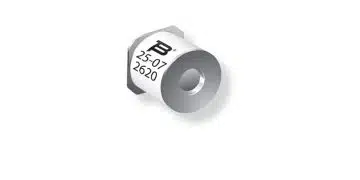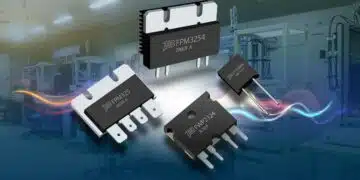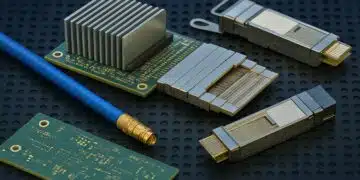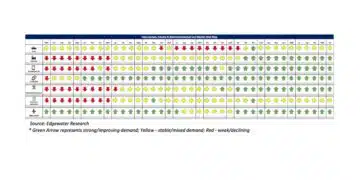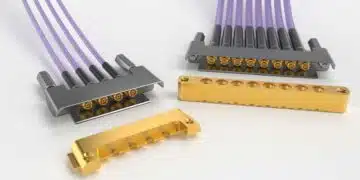Samsung Electro-Mechanics announced it has succeeded in realizing the industry’s highest capacitance at high voltage MLCC ceramic capacitors applicable to electric vehicles and expanding its line-up for high-end level automotive electronic components.
The released MLCCs have been developed specifically with focus to EV electrical vehicle applications with 250V and 100V ratings and 125°C temperature range.
- 33nF/250V in 1206/3216 case size (CL31C333JEH1PN#) in C0G class is featuring low capacitance change rate and stable performance in wide temperature range.
- 10µF 100V in 1210/3225 size X7S dielectric class (CL32Y106KCJ6PJ) is offering industry’s highest capacitance in high-voltage MLCCs.
Electric vehicles operate based on high-voltage battery systems such as battery management systems (BMS) and on-board chargers (OBC). MLCCs used in electric vehicles must be able to withstand the high output voltages transmitted from the battery for ultra-fast charging and power delivery.
The 250V class 33nF product developed this time boasts the highest capacitance in the industry at the same voltage level. 22nF was the highest capacitance for the existing 250V class products. This product improves battery stability by removing high-frequency noise inside the battery module while having the durability to withstand high voltages.
The 100V class 10µF product is used in LED headlamps for electric vehicles and its electric capacitance has been doubled compared to the previous product. Semiconductors used in LED headlamps require high power consumption, so high-capacitance MLCCs that can store a lot of energy and supply it to semiconductors quickly and stably while having high voltage durability are essential.
In general, it is difficult for MLCCs to satisfy both voltage and capacitance characteristics at the same time. Designing thicker dielectrics to increase voltage characteristics reduces the number of internal electrodes that can be stacked, making it difficult to increase capacitance. Samsung Electro-Mechanics has realized high capacitance by refining dielectrics as core raw material in the form of nano-level fine powder. The company also explained that its proprietary surface coating method minimizes agglomeration between powders, enabling stable operation at high voltages.
Meanwhile, the MLCCs developed this time satisfies AEC-Q200, a reliability test standard for automotive electronic components, enabling them to be used in other applications such as ADAS, body, chassis, and infotainment in vehicles.
Samsung Electro-Mechanics CEO Chang Duckhyun said that “Samsung Electro-Mechanics has established the whole line-up for automotive MLCC by developing electric vehicle products,” and that “Samsung Electro-Mechanics will develop and manufacture core raw materials for MLCCs on its own to enhance technological competitiveness, and expand its market share for electronic device MLCCs by internalizing facilities and strengthening production capacity.”
Automotive MLCCs play a role similar to MLCCs for IT, but they are used in different environments than that of IT products, and above all, they require a high level of reliability and durability as they are closely related to human lives. Automotive MLCCs must operate reliably even in extreme environments such as high temperatures (150°C or higher) and low temperatures (55°C below zero), situations where impacts are delivered including bending stiffness, and high humidity (humidity of 85%). In addition, they can be supplied only after passing stringent manufacturing standards that require AEC-Q200 certification, which is a reliability test specification for automotive electronic components (certification specifications for passive components for automobiles), and rigorous verification by each customer. At least 3,000 to a maximum of 15,000 MLCCs are used in an automobile, and they are high value-added products with higher unit prices than IT products. In addition, with the expansion of related markets such as electrification of automobiles, electric vehicles, and autonomous vehicles, automotive MLCCs are considered to be a blue ocean in the industry. The global automotive MLCC market size is expected to continue growing by nearly 40% per year from USD 2.9 billion in 2023 to USD 4 billion by 2026.



